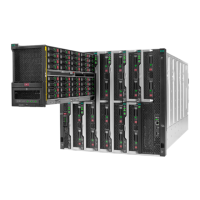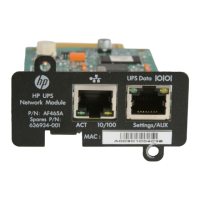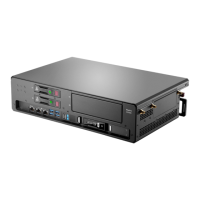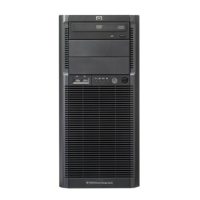Operations 28
Enabling SSH session access to the SCS
1. Issue a Show Server Security command to ensure that you are using an authentication method other than
None.
show server security
2. Issue a Server SSH command with the Enable parameter. You can also specify an authentication method.
server ssh enable auth=<auth>
If an authentication method is not specified, the previous authentication parameter ID is used. The default value
is AUTH=PW.
3. If you are enabling SSH for the first time, you are advised that all other SCS sessions will be terminated. Enter
Y
to continue or
N to cancel.
4. If you are re-enabling SSH, you are prompted to use the existing SSH server key or generate a new key. Enter
Y
to use the existing key or
N to generate a new key.
See “Server SSH command.”
Disabling SSH session access to the SCS
Issue a Server SSH command with the Disable parameter.
server ssh disable
When SSH is disabled, the SCS operates in plain text mode.
Displaying SSH information
Issue the Show Server Security command.
show server security
If SSH is enabled, the display includes SSH2. Regardless of whether SSH is enabled, the display indicates the
authentication method that was specified with the Server SSH command.
Enabling plain text Telnet and SSH connections
Plain text (non-encrypted) Telnet connections are enabled by default.
If you enable SSH connections using the Server Security command and the Encrypt=SSH parameter, plain text
Telnet connections are disabled. However, if you enable SSH connections with the Server SSH command, both
plain text and SSH connections are allowed.
To enable both Telnet and SSH connections, issue a Server Security command, indicating Encrypt=SSH,
None.
Session sharing
Session sharing allows multiple concurrent sessions to the same attached device.
• The 16-port SCS allows up to 32 total concurrent sessions, with up to four concurrent sessions per port.
• The 48-port SCS allows up to 96 total concurrent sessions, with up to four concurrent sessions per port.
You can:
• Disable sharing. In this case, only one session per port can be active at a time.
• Enable automatic session sharing. In this case, a user will automatically be connected to a port even if it is in
use (with restrictions noted in the following examples).
• Enable session sharing with the query option. In this case, when a port is in use, the session originator (the user
who initiated the first session) must grant permission before other users can join a session on that port.
Session sharing and the preemption of device sessions are also affected by the configured access level of the user.
There are three access levels, with the following hierarchy:
SCS Administrator>Administrator>User
For example, assume user A is currently accessing a device, and user B wants to access the same device. If user B’s
access level is equal to or higher than user A’s access level, then user B may be allowed to preempt user A’s device
session. See “Access levels.”
Any user can also request exclusive access to a port if there is no other existing connection to that port. The request is
issued on the login screen by adding the E parameter after the user name or by adding the Exclusive parameter
with the Connect command.

